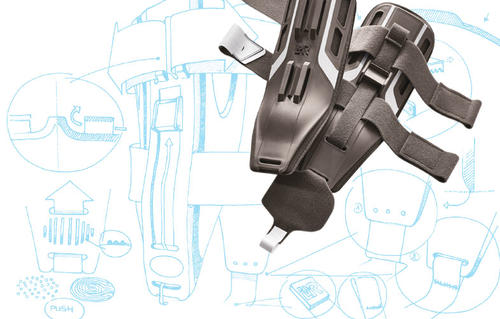“Artificial intelligence is better than doctors at diagnosing malignant melanoma!” This was the title of a press release by the German Cancer Research Centre (DKFZ) in Spring 2019. Scientists based in Heidelberg created an algorithm which could evaluate suspicious skin alterations digitally. 157 dermatologists from 12 university hospitals across Germany were pitched against the artificial intelligence and assessed 100 images for whether what they were seeing was a birthmark or malignant melanoma. At the end of the experiment, a clear winner emerged: the self-learning algorithm.

Digitalisation of medical technologies, connecting up data technologies from across all different fields in the health sector, perfecting diagnosis and treatment using smart algorithms: this is a reality we are already seeing, and it’s not just confined to Silicon Valley.
Thomas Schulz explains this idea in his book: “Medicine of the Future: How Silicon Valley is trying to defeat diseases and help us live longer.”
“In Silicon Valley, the next revolution is always underway to radically change our lives: a redefining of medicine itself. Tech-giants like Google and Microsoft, as well as countless start-ups, are developing data-based computerised medicine which is perfectly adapted to each individual patient. There are already new diagnostic technologies coming available which can detect changes in the body before a disease even develops. Spectacular new treatments and highly-effective medicines open up a promising path to a healthier, and significantly longer life for us all.”
Random House publishing group, and Spiegel publishers, 2nd Edition 2018:

Will patients or specific risk groups start using wearables in order to detect diseases at an earlier stage, and to seek out treatment sooner? Will the doctors of the future use artificial intelligence as an additional resource for diagnosis and treatment? Can big data and artificial intelligence help us in the search for new medicines and treatment approaches? Can we really achieve quantum leaps in global health? You don’t have to be a prophet to be in a position to answer these questions with a resounding yes. The possibilities opening up to us due to the interplay between technical digitalisation, collection, storing and analysis of mass data, and self-learning algorithms seem endless.
The US market research company Frost & Sullivan has predicted that the market for AI systems in the healthcare sector will grow to 6 billion dollars by 2022. That represents an increase of 800%. This trend will have repercussions for the medical device sector too. That is to say that, conversely, no company will be able to afford to miss out on the advantages offered by digital, data-based approaches for their new products and patient-care services.
This is particularly true for European companies which have by no means given up in the race with the US data giants, known as ‘GAFA’ (Google, Amazon, Facebook, Apple) Recently, the EU commissioner, Thierry Breton called for a battle response by Europeans against the seemingly unassailable US alliance. Europe has already missed out on the first wave of the digital business model: companies from the US and China dominate in the area of online user data. With the digitalisation of industry, traffic, and healthcare, a
“new wave is coming, and we must be in a position to ride this wave”,
Breton explained to the Handelsblatt newspaper in January 2020.
We are reminded of David and Goliath, and every child will know all too well how that tale ended. There is a need, however, for the legal and political framework to undergo further changes. Without doubt we are seeing questions of data protection in relation to digital medicine high up on the agenda, but now there is also a great deal of discussion on how these data sets can be put to good use. The usage possibilities in the field of medicine are varied, and acceptance of big data is particularly high in this field. An important fact remains, even despite high sensitivities around this topic: the more tangible the benefits are, the higher the levels of approval even from people who are generally critical of digital revolution (source: The Big Data Debate 2019, p. 157) Public databases are being established which can be used for medical research, and data sharing is catching on within sectors: it is these developments, already a reality, which will dramatically change attitudes towards big data.
People often forget that it is the customer or the patient themselves who drive this development. The upward trend for self-improvement with smart watches, intelligent treadmills or wearables, which can measure heart rate, body temperature or oxygen saturation, is unwavering. Complement this with additional data, such as blood type, allergies, and previous illnesses, and we end up with a data pool which patients can use to draw their own conclusions, acting like doctors. But these technologies are not just for the cool self-improvers out there, but, fascinatingly, they can also be used to improve self-autonomy of the elderly, or in those suffering from physical disabilities.
Digital prevention, diagnosis, monitoring of disease progress, and supporting of care services: these perspectives will bring significant changes for the medical device segment, above all providing a boost to innovative growth. That also means, however, that the medical device sector will become a more challenging environment: if not for any other reason than the breath-taking speed at which mass data can be accrued, with data-driven applications running through cycle after cycle of innovation. At the same time, it will become more and more difficult to predict what will come next. Like it or not, that is something which all players on the market will have to get used to. Indeed, the digital medicine era is no longer just a vision, but has already begun.



